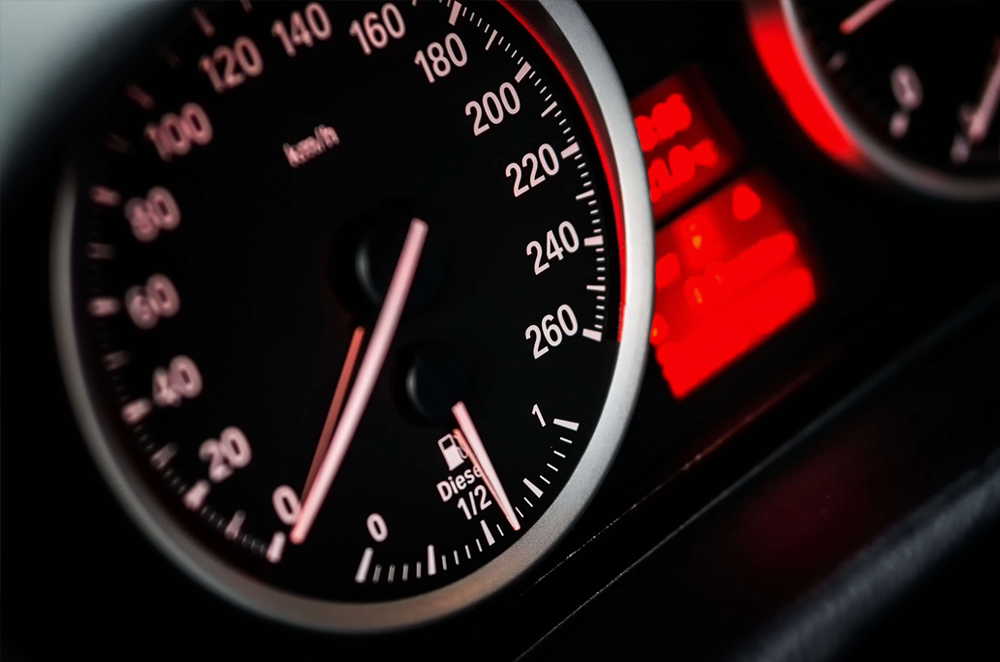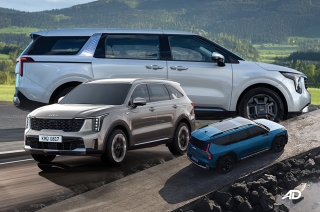
Automobiles can be complicated machines. When broken down into individual parts, understanding how each thing works is something usually reserved for the mechanically- inclined and willing to learn. You’d think, however, that because we use automobiles on a daily basis, we’d do the digging ourselves and learn about how certain things operate. Or, we take the word of those who sound like they know what they’re talking about. Of course, the downside of this is that these facts—despite being generally accepted and willingly perpetuated—might very well end up being completely false.
In this article, we’ll be going over the top five common car myths and figure out the fact behind the fiction. After all, we all love a good exaggerated story, don’t we?

1. Overdrive makes you go faster
We’ve all heard the term used in movies, comic books, heck, in all aspects of pop culture. Going into overdrive or “kicking it into overdrive” usually means going to the next level - faster, meaner, better, in a sense. So what really happens when you switch your car into overdrive? The complete opposite. Overdrive is used for relaxed and efficient highway driving, where the engine exerts minimum effort to maintain speed over distance.
The bigger the car, the safer it is

This works under the pretense that there will be more metal between your body and an object in the event of a crash. This also assumes that a bigger car will lower the chances of you getting injured or even dying from an accident. Because of this people often lean towards bigger vehicles in order to cocoon themselves. Of course, SUVs and pickup trucks have a high center of gravity and are more prone to rollovers compared to their smaller counterparts. However, with the advancement of technology, this isn’t the case anymore as both large and smaller vehicles have become much safer.
Smaller vehicles such as sedans and hatchbacks now come with more complex structures that are designed to move as much of the forces of a crash away from the occupants. Aside from this, these vehicles also have new active and passive safety features that have made them even safer than before.
More expensive fuel will help performance

Premium fuels are expensive, however, this doesn’t mean that they are purer or cleaner than the regular gasoline that you fill up with. Higher octane gasoline is needed for performance vehicles or those with forced induction as it creates a more stable burn. For regular vehicles, on the other hand, you can refer to your owner’s manual for the recommended octane. If your car’s engine requires a higher-octane level then fill up with that. If not, you’re wasting money—as the gains, you get from higher octane fuel are marginal at best. It won’t make your vehicle perform any better, go faster, get better mileage, or run cleaner.
Engine oil needs to be changed every 5,000 kilometers

Another case of “just because you can, doesn’t mean you should”, even though it won’t hurt your car if you change its oil every few months, it isn't going to make any difference either. Back when older engine oils were prone to sludge and build-up, it was a good idea to change the oil every few thousand kilometers to prevent damaging the engine. Newer oils with improved viscosities, additives, coupled with newer engines over the years, have made the intervals much longer in reality. A good ballpark figure would be 15,000 to 20,000 kilometers for every oil change, but you should consult your car’s owner’s manual to be absolutely sure. At the minimum, if your car doesn't travel long distances often or sits in the garage for most of the year, have its oil changed once every year to prevent the buildup of broken-down oil and sludge.
Funny thing is, we have ourselves partly to blame. The oil-changing businesses have been constantly reminding drivers to come back sooner rather than later, and that equals more revenue.
You waste more gas turning on a car than idling

Back in the day when most cars had carburetors to mix fuel and air for the engine to use, then this notion could count for something. However, with today’s technology and through fuel injection, ignition occurs without having to expend any more fuel than what is needed to keep the car idling. . Want to really save on gas? If your car sits for more than 30 seconds, turn it off. Why do you think modern cars are starting to integrate “start/stop” engine technologies?
Latest Features
-
An all-electric future: The Porsche Macan Electric / Featured Article
Porsche’s Macan goes all-electric; it’s a new beast with an electrified heart, yet unmistakably Porsche in performance and spirit.
-
Which Kia should I buy? / Featured Article
We’re here to help you decide which Kia vehicle is best for you, whether it’s a sedan, crossover, or minivan.
-
Why Lynk & Co is a good option for luxury car buyers / Featured Article
Lynk & Co offers premium value for those exploring the luxury market.
Popular Articles
-
Electric Vehicles in the Philippines for under P1 million
Jerome Tresvalles · Aug 19, 2025
-
Top 3 Cars For Every Lifestyle—What Cars Are Right For You? | Behind a Desk
Caco Tirona · Apr 24, 2024
-
5 Tips to Maximize Fuel Efficiency
Jerome Tresvalles · Sep 09, 2024
-
Five driving habits that are draining your fuel tank
Jerome Tresvalles · Jun 24, 2025
-
Can engine braking harm your engine?
Jerome Tresvalles · Sep 11, 2025
-
Do electric cars even need maintenance?
Jerome Tresvalles · Oct 23, 2024
-
Best vehicles for an active outdoor lifestyle
Shaynah Miranda · Jul 25, 2024
-
How to drive different types of vehicle transmissions
May 23, 2024
-
5 easy ways to keep your car interior clean
Allysa Mae Zulueta · Nov 15, 2021
-
How to survive Metro Manila traffic
Earl Lee · Aug 16, 2022



